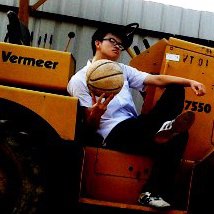Tate Museum defines sound art as “Art which uses sound both as its medium (what it is made out of) and as its subject (what it is about)”
Since the advent of the digital age, sound art has certainly evolved into an interesting medium of endless possibilities. Artists are currently able to generate visual imagery in response to sounds, employ sounds as a means of interactivity as audience control the art through motion sensors, pressure pads and voice activation. I feel that traditionally, art has been very focused on light. So it is intriguing to ponder what does sound reveal that light doesn’t or is unable to?

Upon doing my research on sound art, I found an artist that certainly amazes me. Although he is still by far a traditional sound artist as he did not live in the digital era, I think that his works are a great answer to that question I was thinking about, about the possibilities of sound.
Harry Bertoia (1915-1978) is an American artist, sound art sculptor and modern furniture designer. Fascinated by sound since his childhood and he went on to fascinate the world with his sound art. In fact his sound works are still so popular that thousands them are in high demand at auction houses.
Bertoia was very much inspired during his childhood when he observed Hungarian gypsies using pots and pans to create rhythms. It was the vibrations from these wares that left a deep impression. So in the 1960s, he started to create the series of works he would name ‘Sonambient’.
“Sonambient” are a collection of uniquely crafted sound sculptures, including gongs and “singing bars”. These are sound sculptures that mostly work from the reverberations of the materials to create ethereal sounds. The artist arranges tall tonal wires in a certain fashion such that the pieces will strike each other to create a wonderful sound.
The fascinating thing is that his sculptures are like snowflakes, no two pieces are alike, as he was interested in exploring the endless possibilities of a different or richer sound with varying size rods. This is an artist who is truly obsessed in the medium that he has chosen to venture and create in.
Bertoia also did interesting works in collaboration with others to record his “Sonambient” music into eleven albums. These tracks created are haunting and mysterious. The chime of the rods and bars are contrasted with the thunderous clasps of the gongs.
Hence I find that this is a great example of sound art that can achieve what art is unable to with just plain visuals. Bertoia ability to go to great lengths to engineer such exquisite works has certainly captivated me and deserves the greatest admiration. I believe his works will continue to reverberate in the artworld and live on.
On a side note, relating back to my 4D class, I have seen how my classmates have used sound in their 4D projects and it is really great to see how sound can make the communication all the more effective. Especially so in the library installations as there are quite a few works that use sound and I see that as a good choice of alternative presentation of an artistic experience because the library already is very ‘visually noisy’. So those works managed to reveal the subject matter, the artist intention, etc, in a way that plays out well amidst the visual clutter of the library.
